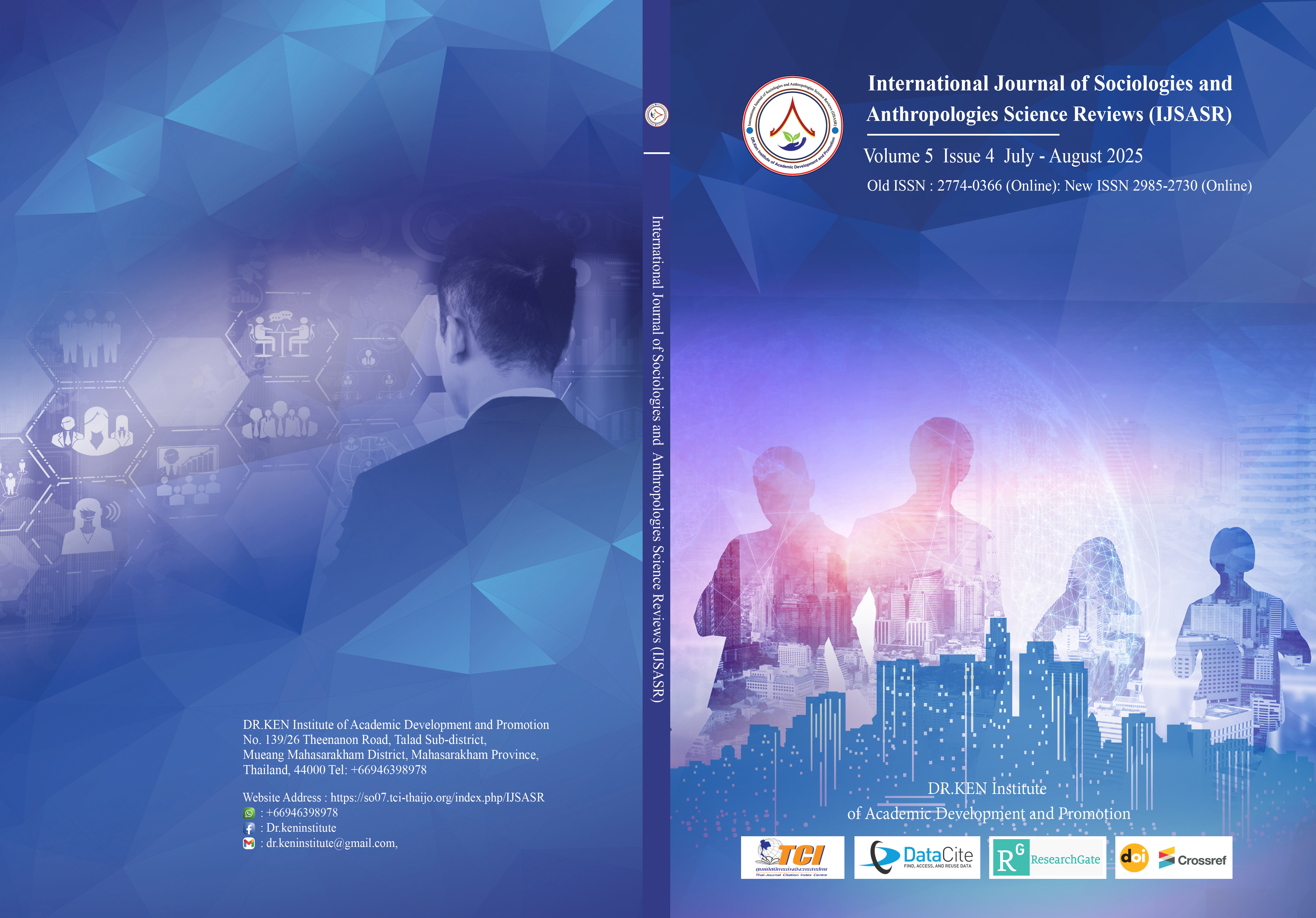Research on the Design of Cultural and Creative Products under the Cultural Landscape Dimensions of Hongshiya Village
Main Article Content
Abstract
Background and Aim: This study aims to explore the application of cultural landscape elements in Hongshiya Village, providing theoretical guidance for the design of artistic and creative products. By analyzing the natural landscape, architectural styles, and local cultural elements, the research seeks to extract region-specific design elements and integrate them into cultural and creative products through design practices.
Materials and Methods: This study employs qualitative research methods, including literature review and theoretical analysis, to examine the cultural landscape characteristics of Hongshiya Village. The researcher investigates the decorative styles and carving techniques of brick carvings and incorporates them into artistic and creative product design. The design approach combines three-dimensional relief techniques with modern minimalist aesthetics to ensure both cultural depth and contemporary appeal.
Results: The findings indicate that incorporating the cultural landscape elements of Hongshiya Village into cultural and creative product design effectively showcases local history, regional characteristics, and humanistic spirit. The integration of Hongshiya's brick carvings significantly enhances the cultural value of the products, increasing public awareness and emotional connection to the village’s cultural heritage. The architectural forms and decorative styles of Hongshiya provide abundant cultural value, enriching the design of cultural and creative products.
Conclusion: The study demonstrates that selecting highly practical product carriers and employing cost-effective materials and techniques can enhance the feasibility of Hongshiya's cultural and creative products. This approach aligns with target consumers' price sensitivity while maintaining a balance between cultural depth and market appeal. The research offers valuable insights into leveraging cultural landscape elements for innovative product design and promoting cultural heritage through creative industries.
Article Details

This work is licensed under a Creative Commons Attribution-NonCommercial-NoDerivatives 4.0 International License.
Copyright on any article in the International Journal of Sociologies and Anthropologies Science Reviews is retained by the author(s) under the under the Creative Commons Attribution-NonCommercial-NoDerivatives 4.0 International License. Permission to use text, content, images, etc. of publication. Any user to read, download, copy, distribute, print, search, or link to the full texts of articles, crawl them for indexing, pass them as data to software, or use them for any other lawful purpose. But do not use it for commercial use or with the intent to benefit any business.

References
Lin, R. A. (2007). Transforming Taiwan Aboriginal cultural features into modern product design: A case study of cross-cultural product design model. International Journal of Design, 1(2), 45–53.
Liu, P., Liu, K., Wu, X., Liu, Y., Li, H., Zhang, X., & Qiu, J. (2022). Design practice of local cultural and creative products under the rural revitalization strategy. Journal of Cultural and Creative Design, 20(1), 359–365. https://doi.org/10.19554/j.cnki.1001-3563.2022.20.043
Liu, P., Xu, Q., & Lin, R. (2022). Practice research on regional cultural creativity product design. Journal of Design Strategies, 2(3), 45–50.
Richards, G. (2011). Creativity and tourism: The state of the art. Annals of Tourism Research, 38(4), 1225-1253.
Sauer, C. O. (1925). The morphology of landscape. University of California Publications in Geography, 2(2), 19-54.
Shi, J., Zhang, M., & Jiang, W. (2024). Research on cultural creativity in rural areas under the background of rural revitalization strategy. Journal of Cultural Heritage Design, 3(1), 12–19.
Throsby, D. (2010). The Economics of Cultural Policy. Cambridge University Press.
Wang, H., & Wang, P. (2023). Application of regional cultural elements in tourism cultural and creative product design. Journal of Tourism and Cultural Creativity, 2023, 1-10.
Wang, Y. (2009). Records of the Palace Museum. Baoding: Hebei University Press.
Zhang, H. (2024). Integration and application of ethnic cultural elements in packaging design from the perspective of rural revitalization. Journal of Guizhou Institute of Light Industry Technology, 6(1), 158–163. https://doi.org/10.19362/j.cnki.cn10-1400/tb.2024.06.035






